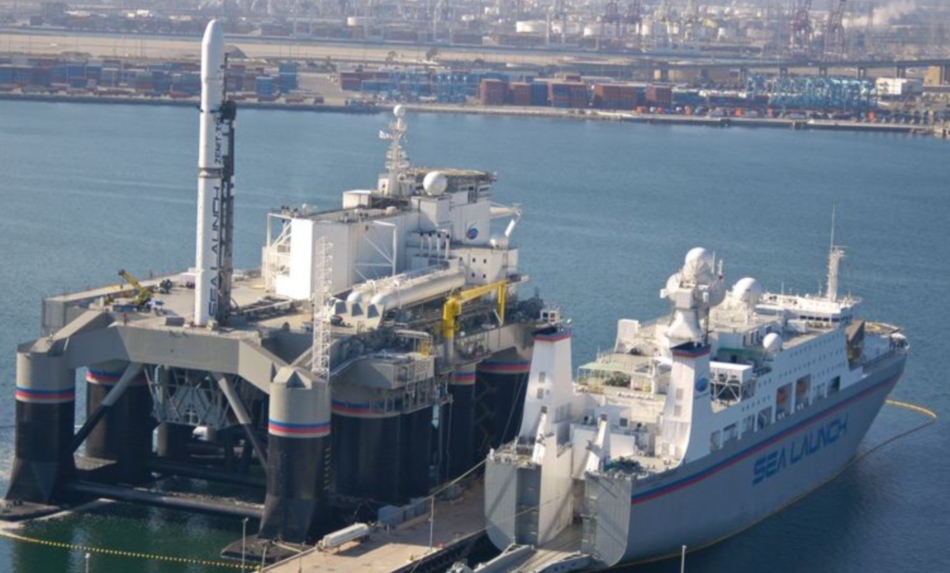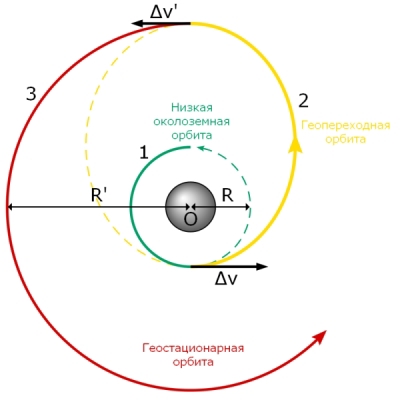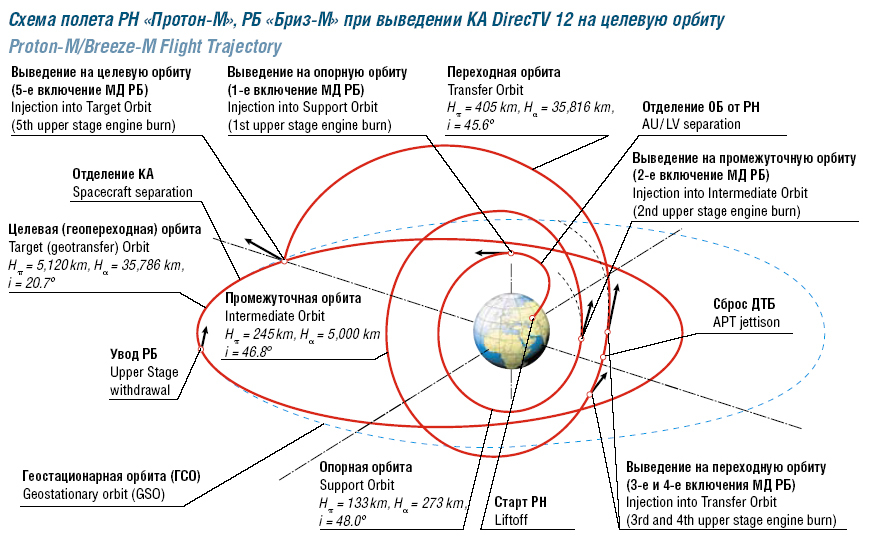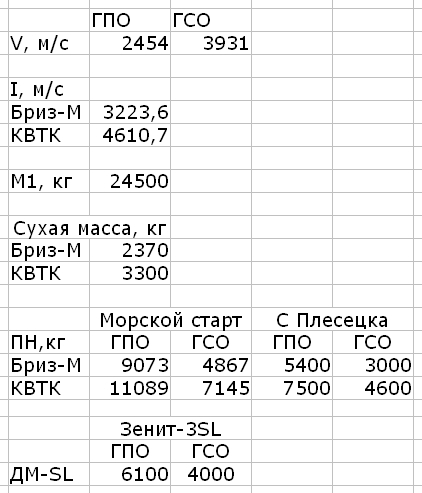News about the "Angara" on the "Sea Launch" - why is this important?

This week, news of the consideration in the Russian space industry of the idea to use the Angara A-5 launch vehicle to replace the Zenit-3SL on the Sea Launch project, not very noticed. They reflected the difficult process of discussing ideas. The first to pass messages that this idea is being discussed. Then there was information that the general designer of the "Angara" declared the inexpediency of this idea . News about the final decision has not yet appeared, let's try to figure out for ourselves the advantages and disadvantages of this idea.
Prehistory
The Sea Launch project began, by today's standards, a long time ago - in 1993. The idea was to place the Zenith launch vehicle on a sea platform and launch satellites into geostationary orbit from the equator. The catch was tempting:
- Starting from the equator gives the maximum free increment of linear velocity. The Earth rotates at an angular velocity of 1 revolution per day, but the linear rotation speed is minimal at the poles and maximum at the equator. As much as 465 m / s is added to the rocket speed for free, if the launch is made at the equator in the east direction.
- The zero latitude of the equator means the absence of losses to the change in the inclination of the orbit. When starting from Earth, the initial orbit inclination is equal to the latitude of the cosmodrome. And for the geostationary orbit, zero declination is needed. Therefore, when starting, for example, from Cape Canaveral, it is necessary to spend fuel to correct the initial inclination of 28.5 °. And when launched from Baikonur, it is necessary to correct as much as 51.6 ° of the initial inclination of the orbit.
- The Zenit launch vehicle was developed in the USSR with a focus on maximizing the automation of launch preparation and launch itself. Therefore, no major technical difficulties could be seen in launching it from the offshore platform, on which at the time of launch there was not a single person left.
In 1999, a test dimensional and weight mockup of a satellite was launched from the Sea Launch, by 2006 the number of launches increased to 6 per year. After the accident of 2007, the launches were stopped for a year, but in 2008 there were five launches. In 2009, the company declared bankruptcy. Obviously, despite the fairly high start-up activity, there were some problems in the economic part of the project. As a result, after all the court proceedings, in 2010, Energia Overseas Limited, a subsidiary of RSC Energia, received a 95% stake in Sea Launch. After bankruptcy, the launch activity decreased, the maximum achievement was 3 satellites launched in 2012. And the accident in February 2013 stopped launches for more than a year.
The present
The Zenit launch vehicle is a good rocket, but it is not fatally lucky. It was developed as a new middle class PH and could replace the Soyuz launch vehicle family, including for manned launches, but the USSR collapsed, and there could be no talk of a fundamental modernization of the rocket fleet in the 90s. The collapse of the Soviet cooperation system led to the fact that factories making one rocket appeared in different countries and began to depend on political relations between them. The second, I fear, final blow to this rocket was dealt by the conflict between Russia and Ukraine. Regardless of its results, the booster rocket, whose engines are produced in Russia, and tanks in Ukraine, has no future. In the short term, it will definitely not be made, and in the long term, technology and equipment will be frozen and lost, at best, partially. And the fact that the Sea Launch base is located in California, still worsens the position of the project in the context of the cooling of Russian-American relations.
')
The combination of economic and political problems led me to expect news of the final closure of the project. That is why the news about the possible replacement of the launch vehicle with the Angara seemed so important to me - this is probably the only chance for the revival of such an engineering beautiful project as Sea Launch. Also here an interesting question arises - the Angara A-5 is noticeably heavier and more lifting rocket than the Zenith. Let's try to calculate how many tons she can put into geostationary orbit?
Such a different GPO
Before starting the calculations, it is necessary to briefly describe what are the methods of launching into geostationary orbit. The main feature of the geostationary orbit is the gravitational perturbations of the moon. The satellite must have its own engines and fuel to remain at the desired point of standing. Therefore, besides the direct launch, when the satellite is launched by a launch vehicle (sometimes with the help of an accelerating unit) directly into the target orbit, there are so-called geo-transition orbits. In this case, the upper stage completes its operation in a highly elliptical orbit, and the satellite reaches its station in the geostationary orbit independently.

Further, if the final parameters of the geostationary orbit are known (apogee 35786 km, perigee 35786 km, inclination 0 °), then the initial inclination of all spaceports is different. Therefore, the parameters of the geo-transfer orbit are different for different countries. More details can be found here , and briefly, geo-transition orbits are divided into:
- Conventional “American” (185x35786 km, 27 °) with delta-V for switching to 1804 m / s GSO and similar to it Chinese and Japanese
- Conventional “European” (200x35786 km, 7 °) with delta-V to switch to 1,500 m / s GSO.
In the USSR, direct launch into geostationary orbit by an upper stage was used. Russia's entry into the market of commercial satellite launches meant the need to adapt to already established standards. The “Baikonur” geopotransfer orbit (200x35786 km, 51.6 °) requires acceleration of 2430 m / s to bring the satellite to the GSO, which would require modification of existing satellite platforms and reduce competitiveness. Therefore, our overclocking units bring satellites to a special transitional orbit, the parameters of which are very different from the "ordinary" GPO, but the delta-V requires an "American" or "European":

In the case of the withdrawal of the satellite from the Sea Launch, the geo-transition orbit of 200x25786 km, 0 ° requires 1477 m / s for the transmission to the GSO.
Calculations
According to this training manual, the impulse for exiting from the orbit of 200x200 km, 0 ° to the GPO 200x35786 km, 0 ° is 2454 m / s . To exit from GPO to GSO, another 1477 m / s is required, and the total delta-V to exit directly to the GSO will be 3931 m / s . In the case of “Hangars” as the upper stage, “Breeze-M ” or the KVTK currently under development can be used. The masses of empty and full blocks and the specific impulse of the engines are known, so we can calculate the payload using the Tsiolkovsky formula:

Where:
- V - final speed (in this case, delta-V)
- I - specific impulse (in m / s)
- M 1 - initial weight
- M 2 - final weight
Transforming, we get:

M 1 is known to us - “Angara A-5” brings 24.5 tons to low Earth orbit. This is an assumption for ease of calculation — in reality, injection into an open-loop orbit with follow-up by the upper stage is used. Also, let's not forget to subtract the mass of the empty upper stage from M 2 .
As a result of the calculations we get:

The conclusion is obvious - the Angara from the Sea Launch will be able to output one and a half times more than the Zenit, and with the promising oxygen-hydrogen block KVTK it will be twice as large.
Pros and cons
At the same time, one should not think that there are no arguments for closing the Sea Launch. If you make a list of the pros and cons, it will look like this:
Arguments for the adaptation of the "Angara" to the "Sea Launch":
- Replacing the launch vehicle will provide an opportunity to continue the project.
- "Angara" will be able to display two to three times more satellites per launch than Zenit, increasing revenues from commercial launches.
- The larger the series of launch vehicles, the cheaper they will cost. In addition, additional orders are additional jobs in the high-tech industry.
- The more of the Angara launch complexes, the greater the flexibility of the tasks and the higher the likelihood of its further long and happy operation.
- The ground base of the complex can theoretically be transferred from California, for example, to Brazil. In this case, commercial launches can be combined with cooperation with Brazil in its space program. For reference - Brazil is extremely unlucky with the space program - in 2003 they had an explosion of the developed rocket on the launch pad, people died. And after abandoning the idea of making a rocket independently, Brazil decided to cooperate with Ukraine and launch the Cyclone-4 launch vehicle from the spaceport in Alcantara. The first launch was originally planned in 2013, but today there is no news about the progress of work.
Arguments for the closing of the "Sea Launch":
- Stopping a project means stopping spending on it. "The horse is dead - down."
- Adaptation of the new rocket to the launch complex already built for another rocket is a lot of money and a lot of time. There are no factors that categorically prohibit the possibility of such an action, but are large expenses justified?
- The cost of launching the serial "Angara" is not yet known. If the rocket costs three times as much as the Zenith, then even with the withdrawal of two satellites there will be no economic sense in the project.
Unfortunately, the degree of significance of these arguments is based on data that we do not have. So, we, ordinary third-party viewers, have to keep up with the news - what will be in the end with Sea Launch?
Source: https://habr.com/ru/post/375577/
All Articles